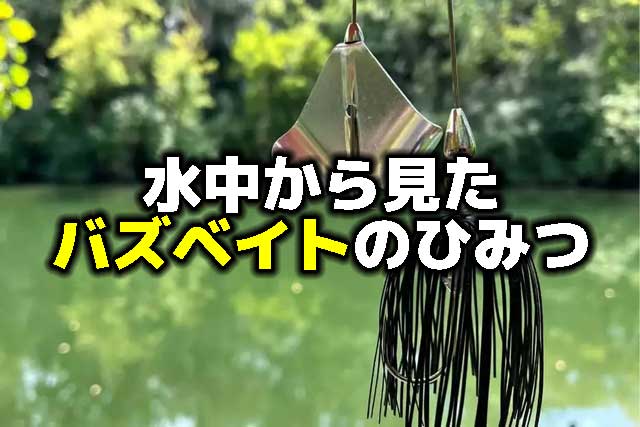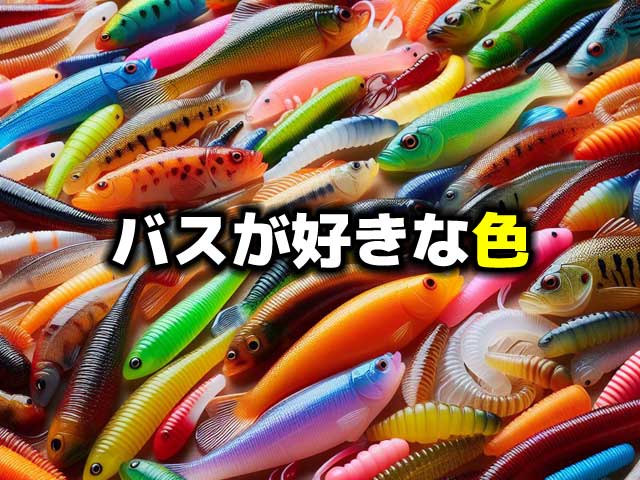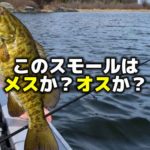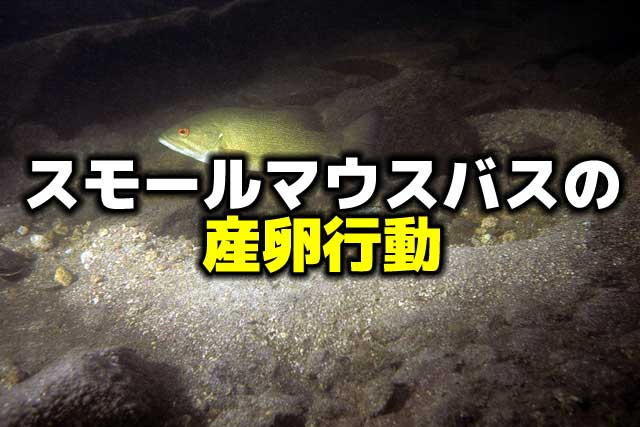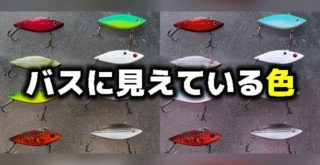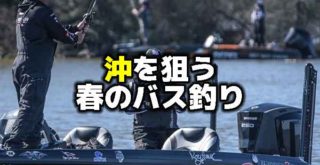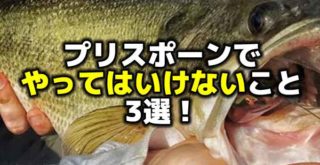ベストな釣果のための水の透明度の重要性:バスはクリアウォーターとマッディーウォーターのどっちが好きなのか!?
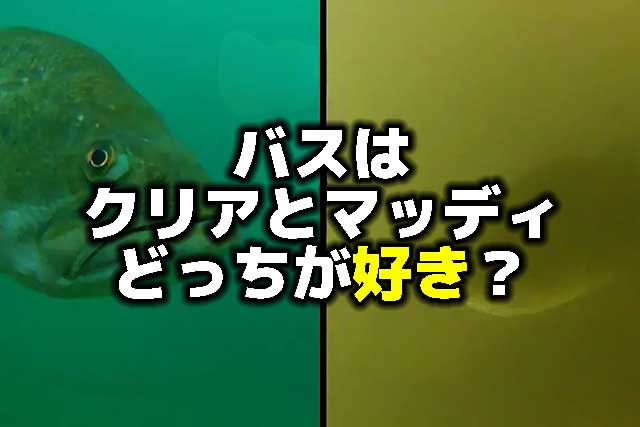
バスは視覚を使ってエサを捕まえる習性があります。透明な水中ではより長距離からの釣りが必要になりますが、濁った水域では浅場やカバーに集まる傾向があります。この記事では、水の透明度によってバスの行動が変わることを解説し、各環境で釣果を上げるためのテクニックやルアー選びのポイントを紹介しています。釣り場の水に合わせて適切な対策を行えば、確実に釣果アップにつながります。
こんにちは!店長の小山です!
みなさんはバス釣りをするとき、水の濁り(透明度)にはどれくらい気を付けていますでしょうか。
クリアウオーターとマッディーウォーターのフィールドで、まったく同じタックル、まったく同じルアー、まったく同じ釣り方をしている方は多くないはずです。
私も、バスの気持ちが100%わかるわけではないにしろ、このくらいの濁りならこういう釣りをしたらいいんじゃないかな?という考えをもってやっています。
そして、その結果といいますか、傾向といいますか、経験をもって「自分はクリアウォーターが好きだ」「自分は濁っている方が好きだ」というふうに釣りの好みが偏ってくるかもしれませんね。
私はどっちの水も好きです。
ひとつだけ好みを言うとしたら、濁っている方が根掛かりしやすいかどうかが目で見えないのでちょっと怖い、そんな感じでしょうか。
では、バスの立場ではどうなのでしょうか。
バスは実際のところ、水がきれいな方が好きなのか?それとも濁っている方が好きなのでしょうか。考えたことってありますか?
この記事は、アメリカのバスフィッシングの情報とバス釣り専用コーヒーの販売サイト「BassFishing life.com」のコラム記事で、バスフィッシングのテレビ番組の司会やライターとして活躍してきたスティーブ・ロジャース氏が、バス釣りと水の透明度の関係について解説してくれています。
バスの好みは単純ではないかもしれませんが、少しでもバスが好きな水質を知れば、バス釣りでの成功がまた一歩近づきますよね。
ぜひ最後まで読んでみてください。
バスはクリアウォーターとマッディーウォーターのどちらが好きか?
Bass rely on their sense of sight for feeding. Fish that live in a normally stained water environment have adapted to feeding with limited visibility, but looking for the cleanest water an angler can find will put them around very sight-oriented bass.
There are a couple of factors that we need to consider about the long-term conditions of the water we are fishing.
Is the Water Normally Stained or Clear?
Bass that live in dirty or stained water the majority of the time have adapted to finding and feeding on prey with other senses.
The lateral line on a bass is highly sensitive and while it cannot pick up vibrations from a great distance, it is sensitive enough to notice the sound waves from a crayfish walking.
Most biologists believe that the effective range is about 4ft.
Bass that live in low-visibility conditions also tend to move shallower than their clear water cousins and relate to hard cover.
However, bass in these environments will move to clear water areas if they can find it. A perfect example is after a rain. If the runoff is slow and clean, it will draw fish to the area where it is spilling into the lake. The added current and oxygen levels also play a key role in pulling stained water bass toward the clearer water habitat.
What about bass that live in a normally clear water ecosystem?
These fish have become strong sight feeders.
When the water clarity changes suddenly from clean to stained or dirty water, the fish can shut down and bites may be hard to come by.
In this scenario, where the water is normally clear, it is always best to find the cleanest water you can find. It may take some looking around, but the effort is worth it.
(These bass are strong sight feeders in this clean water and will chase a lure a distance when looking for prey.)
Here is a perfect example.
When fishing the upper Mississippi River several summers ago, Minnesota had taken a severe beating from storms. This portion of the Mississippi traditionally has good visibility.
I happened to be working through a portion of the Minnesota Slough when the storm surge burst out of a tributary and turned the water to mud in short order.
(Here is an article on best lure color choice in dirty water with underwater proof.)
The bite vanished.
We pulled out our phones and looked at Google Earth. Before long we found a portion of the slough that does not get directly hit by the current. Upon motoring over there we found a large bay where the water remained clean.
The bass moved into it by the dozens and we proceeded to catch a pile of fish.
(Here is an article explaining how to tell if you have the right color lure.)
(This bass was filmed at a depth of over 20ft and you can still see how clear the water is below the fish.)
The Challenge of Fishing Clear Water
While bass are drawn to high-visibility situations, there are plenty of challenges for anglers.
First, it is important to remember that distance is key to success. This distance needs to be considered both horizontally and vertically.
In clear water, fish are aware of our presence well before we get anywhere near them. The better quality bass are even more astute and will slip away without anglers standing a chance of catching one.
Long casts, lighter lines, and finesse presentations are all key components to success in clear water.
I spend most of my time fishing water where you can still see the bottom at a depth of 20ft. This means that often I catch bass in that 30-40 ft range. While this is an extreme case, it demonstrates the type of distance that it may take to be successful.
Locating Bass in Stained or Dirty Water
As mentioned earlier, the more restricted the visibility the shallower the fish will move.
There are other factors, like oxygen, temperature, and current, but it is always good to start looking shallow in dirty water and move your way out.
The bass will pull onto hard cover as well.
It is similar to how we act when the power goes out. Our instincts are to reach with our hands and move through the house by feeling for something hard – like the walls or doorways. Bass do the same thing.
(A sea wall can hold a lot of bass when the water is dirty.)
This hard cover or structure could be rock, wood, dock pilings, and seawalls.
One of the most important factors for success when fishing in murky water is casting accuracy. Often the baits we use will need to be placed perfectly. Our jigs, Texas rigs, and other target-oriented lures will need to be dropped with precision. Missing a piece of cover by a few inches can mean the difference between a bite and nothing.
Repeated casts to the same location is also an effective approach.
Moving Lures and Locating Bass in Stained Water
It can take a long time to locate bass when fishing slow-moving lures that are flipped or pitched.
The goal of every angler is to find bass and then pick an area apart and see what is there. So how do we do that if the bass are tight to cover and their strike zone is reduced?
Some excellent dirty water lures that offer plenty of thump, yet can still be worked around cover include spinnerbaits, bladed jigs, squarebills, and other crankbaits with rattles.
(Squarebills are dynamite tools for finding bass when the water visibility is low.)
While we hope to catch a bass with these lures, it is imperative that we pay close attention to what is happening. Feeling a bass swipe at the lure, witnessing a follow, or a small blow-up can give us critical information about where the bass are holding.
(Here is an article on effectively fishing a crankbait from shore.)
We can then work the area in a more thorough fashion with the target-oriented lures mentioned earlier.
Water Clarity and Angler Confidence
An important aspect we must mention is angler confidence.
Some of the best bass anglers in the world shy away from clear water and others hate to fish in muddy situations. Each of us has a preference.
Even if bass in a particular lake prefer the cleanest water possible, an angler may do better searching for a location with a little color to it. This will let the angler move closer and not worry about the ultra-finesse techniques that are often necessary when the water is crystal clear.
If you are not confident in an area, it is almost guaranteed it will limit your success. Find a water clarity you are most comfortable with. Then practice fishing in situations that expand your comfort level when the opportunity arises. Soon you will have confidence in a variety of water clarities.
バスはエサを見つけるのに視覚に頼っています。濁った水のフィールドに住んでいるバスは、見えづらい中でもエサを探すのに適応していますが、アングラーがクリアウォーターではサイトフィッシングがしやすいのと似ています。
長期的な水の状態を考える必要があると思います。
いつも濁っているのか、それともいつも透明なのか?
濁った水に住むバスは、視覚以外の感覚を使ってエサを見つける能力を身につけています。バスの側線は非常に敏感で、遠くからの振動は拾えませんが、エビが歩く音程度なら気づくことができるのです。
ほとんどの生物学者は、この有効範囲は約120cmだと考えています。
視界が悪い環境に住むバスはシャローに移動し、ハードカバーに身を寄せる傾向があります。
しかし、クリアウォータエリアがあるなら、そちらに移動することもあります。例えば雨上がりで、湖にきれいな流れ込みができた場合などです。流れと酸素量の増加も、濁った水にいるバスを透明な水域に引き寄せる大きな要因となります。
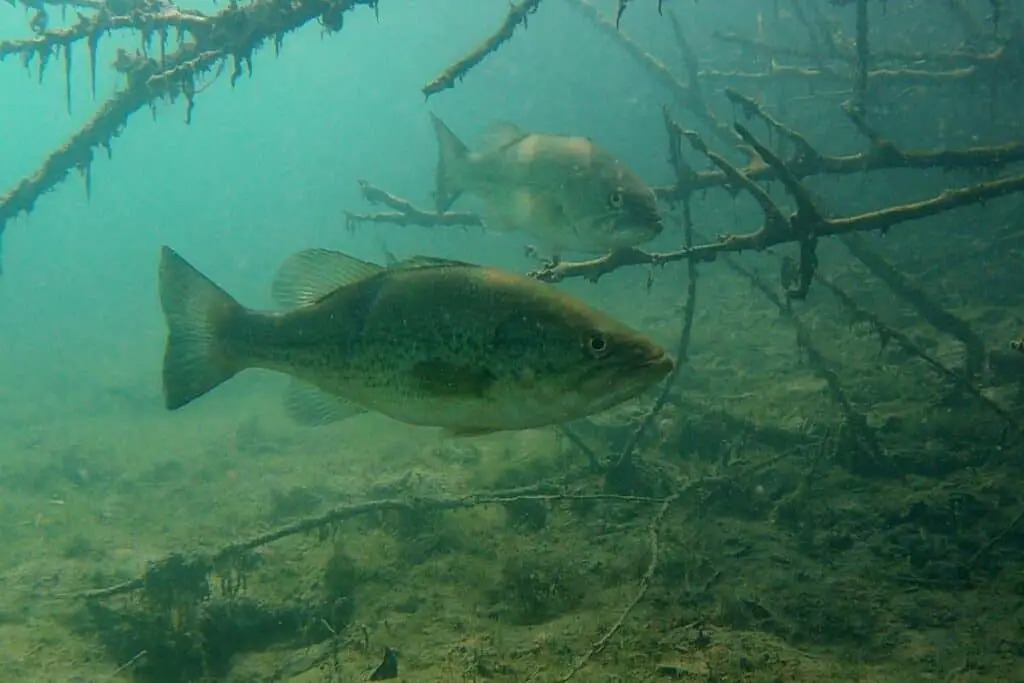
一方、普段からクリアウォーターに住むバスはどうでしょうか?
クリアウォーターのバスは、視覚によるフィーディングに頼る習性が強くなっています。
透明から急に水が濁れば、バスは動かなくなり、バイトが遠くなる可能性があります。
こういった時は、できるだけ透明度の高いエリアを見つけることが大切だと思います。少し探す必要があるかもしれませんが、その努力は報われるはずです。
かつてミシシッピ川の上流で釣りをした際の例を挙げさせていただきます。
ミネソタ州では大雨に見舞われ、透明度の高いミシシッピ川の一部が急に濁りました。
その時、私は湿地帯で釣りをしていましたが、支流が増水し、濁りが入ってきました。すると一気に泥水で視界が利かなくなり、釣れなくなってしまいました。
スマホのグーグルアースで探してみると、流れの影響を受けにくいワンドがあることがわかりました。そちらに移動したところ、透明度の高いエリアを見つけることができ、多くのバスが集まっていました。そこで再びたくさん釣ることができました。
バスは透明な水に引き寄せられますが、アングラーにとっては課題もあります。
まず、バスに気づかれないための距離が重要になります。水平・垂直両方の距離を考慮する必要があります。
透明な水中では、バスは私たちの存在をかなり前から感知します。ハイクオリティなバスほどその能力が優れていて、近づく前に素早く逃げてしまうのです。
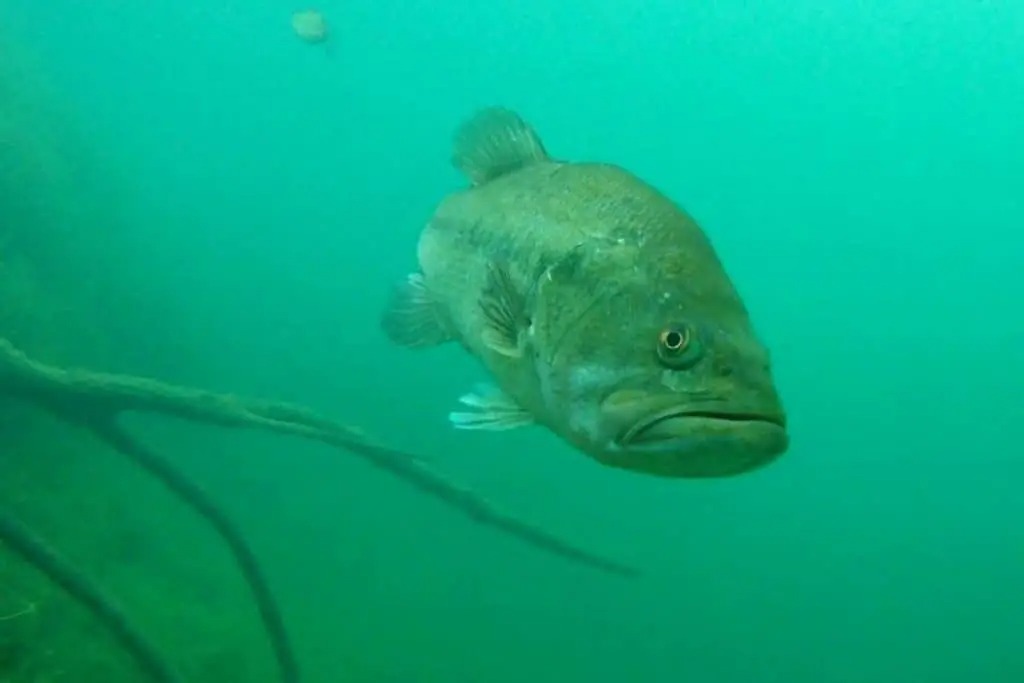
ロングキャスト、細いライン、慎重なプレゼンテーションが、クリアウォーターでのバス釣りに欠かせない要素となります。
私は水深6メートルでもボトムが見えるほどのフィールドによく行きますが、そのようなところでは10~12メートル離れた距離からバスを狙う必要があります。極端な例ですが、成功するための距離感覚が分かるのではないかと思います。
濁りの中のバスを探す際は、視界が制限されるほど(濁れば濁るほど)シャローから探すことが大切です。
酸素量、水温、流れなども影響しますが、濁った水ではまず浅場から探し、徐々に深場へと移動するのがいいでしょう。
また、バスはハードカバー(隠れ家)に身を寄せる傾向があります。
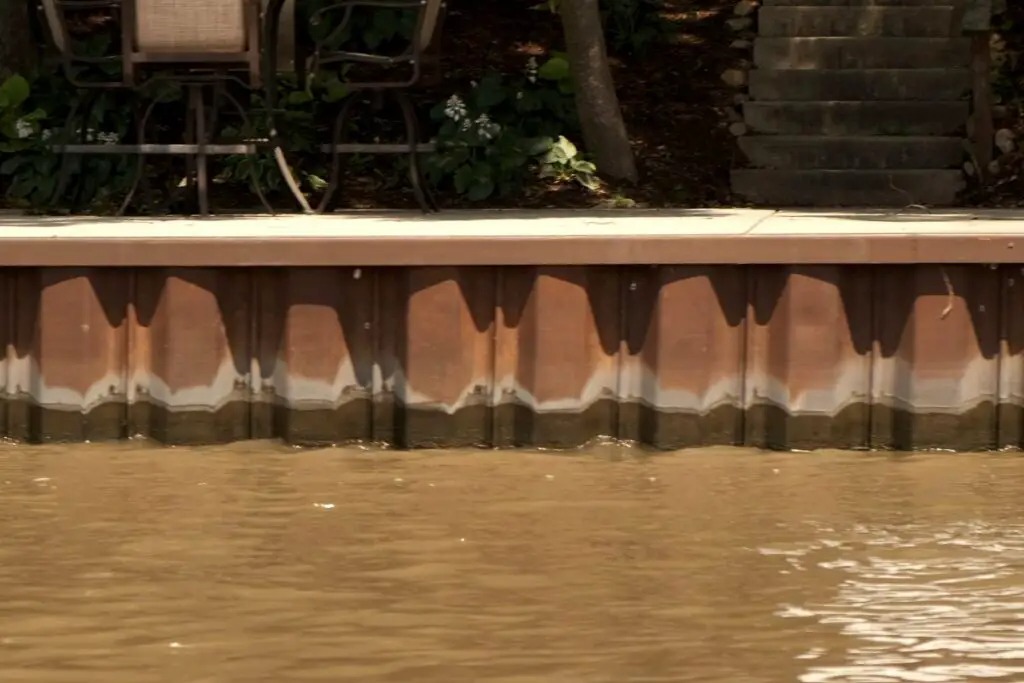
私たちが暗闇の中を歩くときの行動に似ています。壁や扉のような硬い物を手で探って進むように、バスも岩、倒木、桟橋の柱、護岸などの隠れ家を求めます。
濁った水での釣りでは、キャストの正確さが何よりも重要です。ルアーを隠れ家からわずかにはずれてしまえば、バイトを逃してしまう可能性が高くなるのです。
同じスポットにくり返しキャストするのも有効な手段です。
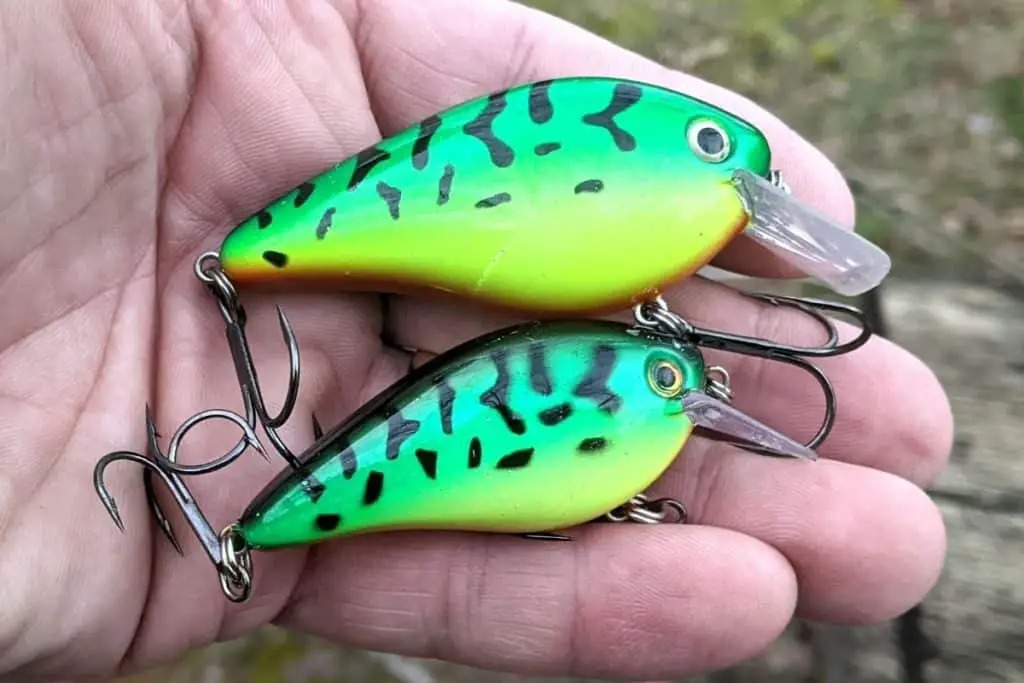
濁った水で巻き物系ルアーを使い、バスの居場所を探るのも一つの方法でしょう。
重めのスピナーベイト、ブレードジグ(チャター)、ラトル入りのクランクベイトなどを使えば、バスの気配を感じ取ることができる可能性が高くなります。直接のヒットはないかもしれませんが、バスの居場所がわかれば、その後にターゲットを絞ったルアーで狙えるでしょう。
最後に、水の透明度と釣り人の自信の関係にも触れておきましょう。
世界トップクラスのバスプロでさえ、クリアウォーターを苦手とする人もいれば、マッディーウォーターを避ける人もいます。それぞれ得意・不得意があるものです。
たとえ、あるフィールドでは最も活発が高いバスが透明度の高いエリアにいたとしても、釣り人に自信がなければ思うように釣れないかもしれません。少し濁りのある方が自信を持てる場合もあるでしょう。そうすれば、細かいテクニックに頼らず、距離を詰められます。
自信がないエリアで釣ると、上手くいかない可能性が高くなります。自分が一番自信を持てる水の透明度のエリアを見つけましょう。そして機会があれば、徐々に自信のない環境にも挑戦していくと良いでしょう。やがてはさまざまな透明度に対応できる自信が付くはずです。
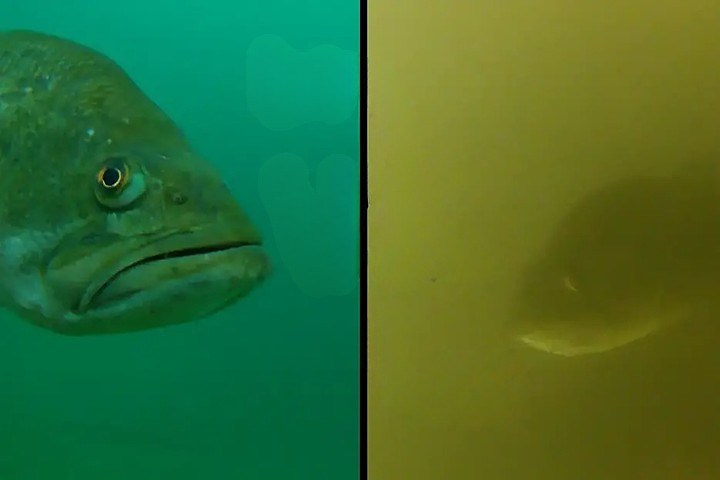
この記事を読む限り、バスがどんな水質が好きかという視点で見ると、どちらかといえばクリアな方が好きなような印象を受けますね。
しかしクリアウォーターにいるバスの方が警戒心が強いという感じだったでしょうか。
他に、バスの側線の感度は120センチと書いてありました。
濁りで視界が悪い時は、水深120センチ以内にバスが集まると考えても良いかもしれませんね。
この記事に書かれていることは、私の経験的にもほとんど賛成なのですが、ひとつだけ反対意見といいますか、別の意見があります。
それはクリアウォーターのバスは、濁りが入ってきた場合、クリアなエリアに逃げるバスと、濁りの中を好むバスに分かれるということです。
そして、濁りを選択したバスは完全に狂っていて、これまでの性格が嘘のようにイージーモード、釣れ釣れ君になってしまうということです。
おそらくですが、濁った水の流入というのは、陸上や土の中にいた昆虫やミミズ類が含まれていたり、動物や虫の糞や死骸などの有機物が溶け込んでいて、かなり「いい匂い」の状態なのではないでしょうか。
そのいい匂いや実際に流れてくる無抵抗のエサを前にして、バスは超ハイテンションになっているような気がします。
そして、普段ありえないくらいの濁りが自分の身を隠し、オープンウォーターでありながら天敵から隠れられているという安心感も、行動が大胆になる要因になっているのだと思います。
野尻湖や木崎湖で急な雨や長雨になったときは、岸際の濁りの流れ込みを探してみてください。一投で決まる勝負がたくさんあります!
普段マッディウォーターに住んでいるバスだって、さらに濁ることが悪いとは限りません。
「水質」が悪くなる濁りは歓迎できないかもしれませんが、ただ単に「濁りが悪化する」だけなら、むしろ狙ってみる方がいいと考えます。まずは、周りと違う場所が狙いどころだと私は思うんです。
最後に書かれていた自信についてが、やはり重要かもしれません。
バス釣りはメンタルスポーツですから、気持ちが大きく釣果に影響しますもんね。
釣れそうもないところではなかなか釣れないものですよね、なぜか。
それでも、苦手な水の透明度に挑戦して、いずれ自分の釣りの幅を広げようではありませんか!
それではまた。
毎度ありがとうございます!
